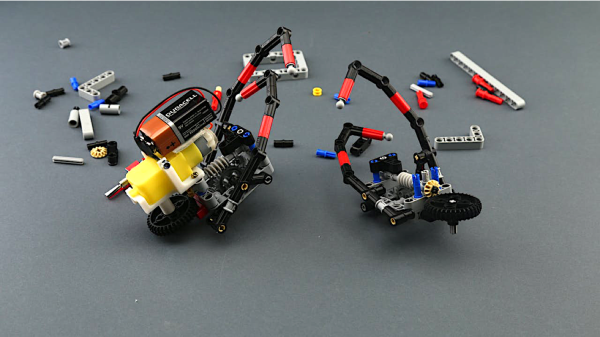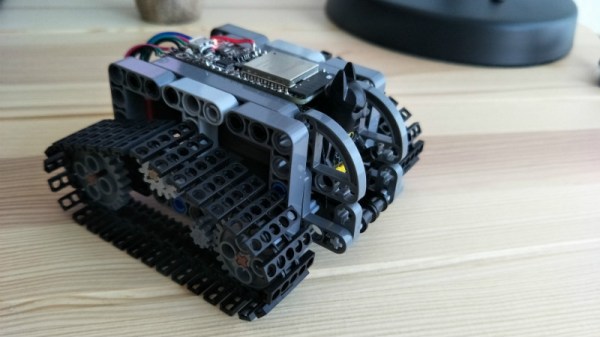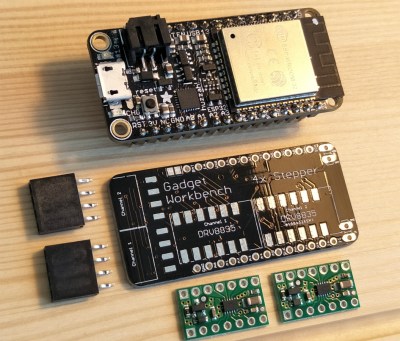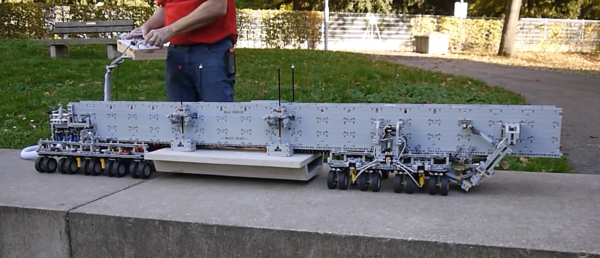Back in the 20th century, Lego Technic was a popular toy designed to teach kids about mechanical technology, and be a lot of fun to boot. Motors and pneumatics were available, but by and large you had to move your creations and make the noises yourself. That’s not the case these days, as the [Brick Experiment Channel] demonstrates with this impressive Lego tank.
The drivetrain is straightforward, using standard Lego tank treads with each side given its own motor for easy skid steering. However, the real party piece is the slingshot cannon, which launches Lego soccer balls at 60 km/h. Utilizing several motors, it’s complete with elevation adjustment for accurate ranging, and a 6 round magazine so you can (slowly) prosecute your targets with rounds downrange.
What really makes this build great is the control system, with the tank being controlled by a PS4 controller via Sbrick, a device that lets Lego motors be controlled via Bluetooth. We’d love to build a couple of Lego vehicles and have them blast away at each other. We’ve seen the technology used before for a secret heist robot. Video after the break.



















